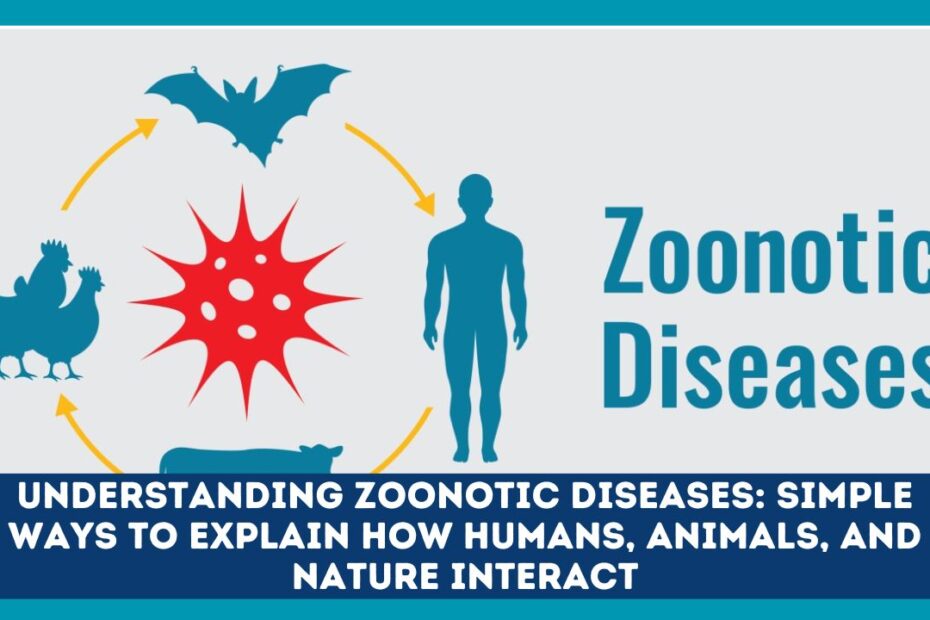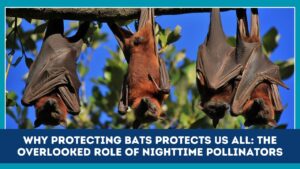Zoonotic diseases are infectious illnesses that can be transmitted from animals to humans.
These diseases have been a part of human history for centuries, but their significance has grown in recent times due to factors like urbanization, climate change, and increased human-animal interactions.
Understanding how these diseases spread and how we can prevent them is crucial for global health.
What Are Zoonotic Diseases?
Zoonotic diseases, or zoonoses, are illnesses caused by pathogens—such as viruses, bacteria, parasites, and fungi—that are transmitted from animals to humans.
The transmission can occur through direct contact with animals, consumption of contaminated food, or through vectors like mosquitoes and ticks.
Key Statistics
- 60% of all known infectious diseases in humans are zoonotic.
- 75% of emerging infectious diseases in humans have an animal origin.
- Over 2 billion people are affected by zoonotic diseases annually, leading to approximately 2 million deaths worldwide.
How Do Zoonotic Diseases Spread?
Zoonotic diseases can spread through various pathways:
- Direct Contact: Handling animals, bites, scratches, or exposure to bodily fluids.
- Indirect Contact: Touching contaminated surfaces or consuming contaminated food or water.
- Vector-Borne Transmission: Through insects like mosquitoes and ticks that carry pathogens from animals to humans.
Common Zoonotic Diseases
Rabies
- Transmission: Primarily through bites from infected mammals.
- Symptoms: Fever, headache, excess salivation, muscle spasms, paralysis, and mental confusion.
- Prevention: Vaccination of pets and wildlife control.
Leptospirosis
- Transmission: Through contact with water, soil, or food contaminated by the urine of infected animals.
- Symptoms: High fever, headache, bleeding, muscle pain, chills, red eyes, abdominal pain, jaundice, or vomiting.
- Prevention: Avoiding contact with potentially contaminated water, wearing protective clothing.
Nipah Virus
- Transmission: From animals to humans, often through contaminated food or direct contact with infected animals.
- Symptoms: Fever, headache, dizziness, drowsiness, and mental confusion.
- Prevention: Avoiding consumption of raw date palm sap and close contact with sick animals.
Avian Influenza (Bird Flu)
- Transmission: Direct contact with infected birds or their droppings.
- Symptoms: Cough, sore throat, fever, muscle aches, and in severe cases, pneumonia.
- Prevention: Avoiding contact with sick birds, proper cooking of poultry products.
Factors Contributing to the Spread of Zoonotic Diseases
Several factors have increased the risk and spread of zoonotic diseases:
- Urbanization: Increased human populations in urban areas lead to closer contact with animals.
- Climate Change: Alters the habitats of animals and vectors, expanding the range of diseases.
- Deforestation: Displaces wildlife, bringing them into closer contact with human populations.
- Global Trade and Travel: Facilitates the rapid spread of diseases across borders.
Preventive Measures
Preventing zoonotic diseases involves a combination of strategies:
- Education and Awareness: Teaching communities about the risks and prevention methods.
- Vaccination: Immunizing pets and livestock against common diseases.
- Safe Food Practices: Ensuring proper cooking and handling of animal products.
- Vector Control: Using insect repellents and controlling mosquito populations.
- Environmental Management: Reducing habitat destruction and controlling waste.
One Health Approach
The One Health approach recognizes that human, animal, and environmental health are interconnected. It promotes a collaborative effort across multiple disciplines to achieve optimal health outcomes for people, animals, and the environment.
Global Efforts and Challenges
Organizations like the World Health Organization (WHO), Centers for Disease Control and Prevention (CDC), and Food and Agriculture Organization (FAO) are working together to monitor and control zoonotic diseases. However, challenges such as limited resources, lack of infrastructure, and political barriers hinder effective implementation.
Zoonotic diseases highlight the intricate connections between humans, animals, and the environment. By understanding these connections and implementing preventive measures, we can reduce the risk of these diseases and promote a healthier world for all species.
Overview of Common Zoonotic Diseases
| Disease | Transmission Method | Common Hosts | Symptoms | Prevention Measures |
|---|---|---|---|---|
| Rabies | Animal bites | Dogs, bats, raccoons | Fever, confusion, paralysis | Vaccination, avoiding bites |
| Leptospirosis | Contact with contaminated water | Rodents, livestock | Fever, headache, muscle pain | Protective clothing, sanitation |
| Nipah Virus | Contact with infected animals | Bats, pigs | Fever, headache, dizziness | Avoiding raw date palm sap |
| Avian Influenza | Contact with infected birds | Poultry, wild birds | Cough, sore throat, fever | Avoiding sick birds, proper cooking |
By understanding the dynamics of zoonotic diseases and adopting preventive measures, we can mitigate their impact and ensure a healthier coexistence between humans, animals, and the environment.
FAQs
1. Can zoonotic diseases be transmitted from humans to animals?
Yes, some diseases can be transmitted from humans to animals, known as reverse zoonoses. However, this is less common than the transmission from animals to humans.
2. Are all animals capable of transmitting diseases to humans?
No, not all animals carry zoonotic diseases. The risk depends on the species, their environment, and their interactions with humans.
3. How can I protect myself from zoonotic diseases?
Practicing good hygiene, avoiding contact with sick animals, ensuring pets are vaccinated, and consuming properly cooked food are effective ways to reduce the risk.



